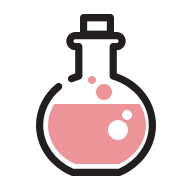- Remove All
 Your shopping cart is currently empty
Your shopping cart is currently empty
Shopping Cart
Galanin (2-11) amide (human, mouse, rat, porcine, bovine, ovine) (trifluoroacetate salt)
Catalog No. T38109
Galanin (2-11) amide is a synthetic peptide fragment of the neuropeptide galanin and an agonist of the galanin-2 (GAL2) receptor (EC50= 9.32 nM in a fluorescence imaging plate reader assay).1It selectively binds to the GAL2receptor (IC50= 1.76 nM for the rat receptor) over the GAL1receptor (IC50= 879 nM for the human receptor) but does also bind to the GAL3receptor (Ki= 271 nM for the rat receptor).1,2Intracerebroventricular administration of galanin (2-11) amide (1 nmol/animal) decreases immobility in the forced swim test in rats.3It also reduces the hind paw mechanical pain threshold and increases the hind paw cold sensitivity threshold in rats.1
Galanin (2-11) amide (human, mouse, rat, porcine, bovine, ovine) (trifluoroacetate salt)
Galanin (2-11) amide (human, mouse, rat, porcine, bovine, ovine) (trifluoroacetate salt)
Catalog No. T38109
Galanin (2-11) amide is a synthetic peptide fragment of the neuropeptide galanin and an agonist of the galanin-2 (GAL2) receptor (EC50= 9.32 nM in a fluorescence imaging plate reader assay).1It selectively binds to the GAL2receptor (IC50= 1.76 nM for the rat receptor) over the GAL1receptor (IC50= 879 nM for the human receptor) but does also bind to the GAL3receptor (Ki= 271 nM for the rat receptor).1,2Intracerebroventricular administration of galanin (2-11) amide (1 nmol/animal) decreases immobility in the forced swim test in rats.3It also reduces the hind paw mechanical pain threshold and increases the hind paw cold sensitivity threshold in rats.1
| Pack Size | Price | Availability | Quantity |
|---|---|---|---|
| 500 μg | Inquiry | 35 days | |
| 1 mg | Inquiry | 35 days | |
| 5 mg | Inquiry | 35 days | |
| 10 mg | Inquiry | 35 days |
Bulk & Custom
Add to Cart
Questions
View MoreContact us for more batch information
Resource Download
Product Introduction
Bioactivity
Chemical Properties
| Description | Galanin (2-11) amide is a synthetic peptide fragment of the neuropeptide galanin and an agonist of the galanin-2 (GAL2) receptor (EC50= 9.32 nM in a fluorescence imaging plate reader assay).1It selectively binds to the GAL2receptor (IC50= 1.76 nM for the rat receptor) over the GAL1receptor (IC50= 879 nM for the human receptor) but does also bind to the GAL3receptor (Ki= 271 nM for the rat receptor).1,2Intracerebroventricular administration of galanin (2-11) amide (1 nmol/animal) decreases immobility in the forced swim test in rats.3It also reduces the hind paw mechanical pain threshold and increases the hind paw cold sensitivity threshold in rats.1 |
| Relative Density. | no data available |
Storage & Solubility Information
| Storage | keep away from moisture | Powder: -20°C for 3 years | In solvent: -80°C for 1 year | Shipping with blue ice. |
| Solubility Information | DMSO: 5 mg/mL, Sonication is recommended. DMF: 5 mg/mL, Sonication is recommended. |
Calculator
In Vivo Formulation Calculator (Clear solution)
Please enter your animal experiment information in the following box and click Calculate to obtain the mother liquor preparation method and in vivo formula preparation method:
Mother liquor preparation method: 2 mg of drug dissolved in 50 μL DMSO (mother liquor concentration of 40 mg/mL), if you need to configure a concentration that exceeds the solubility of the product, please contact us first.
(mother liquor concentration of 40 mg/mL), if you need to configure a concentration that exceeds the solubility of the product, please contact us first.
Preparation method for in vivo formula: Take 50 μL DMSO main solution, add 300 μLPEG300
main solution, add 300 μLPEG300 mix well and clarify, then add 50 more μL Tween 80, mix well and clarify, then add 600 more μLddH2O
mix well and clarify, then add 50 more μL Tween 80, mix well and clarify, then add 600 more μLddH2O mix well and clarify
mix well and clarify
For Reference Only. Please develop an appropriate dissolution method based on your laboratory animals and route of administration.
Dose Conversion
You can also refer to dose conversion for different animals. More Dose Conversion
Tech Support
Please see Inhibitor Handling Instructions for more frequently ask questions. Topics include: how to prepare stock solutions, how to store products, and cautions on cell-based assays & animal experiments, etc
Keywords
Related Tags: buy Galanin (2-11) amide (human, mouse, rat, porcine, bovine, ovine) (trifluoroacetate salt) | purchase Galanin (2-11) amide (human, mouse, rat, porcine, bovine, ovine) (trifluoroacetate salt) | Galanin (2-11) amide (human, mouse, rat, porcine, bovine, ovine) (trifluoroacetate salt) cost | order Galanin (2-11) amide (human, mouse, rat, porcine, bovine, ovine) (trifluoroacetate salt)

Copyright © 2015-2025 TargetMol Chemicals Inc. All Rights Reserved.




